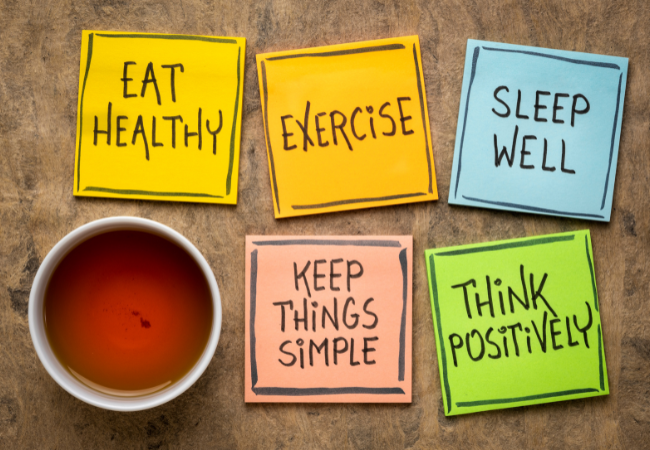In today’s fast-paced society, the quest for How to Maintain a Healthy Work-Life Balance has emerged as a pivotal aspect of modern living. Achieving an equilibrium between career demands and personal life is not only desirable but necessary to thrive in both arenas. The importance of maintaining work-life balance is widely recognized as a pillar for mental and physical well-being, influencing our daily productivity and overall quality of life. Thus, individuals and organizations alike are increasingly seeking work-life balance solutions to ensure that the scales of personal and professional commitments are aligned in harmony.
Key Takeaways
- Understanding the essence of work-life balance and its significance in today’s workforce.
- The critical need for effective strategies that cater to both professional productivity and personal satisfaction.
- The role of time management and boundaries in maintaining work-life balance.
- Recognizing the impact of a balanced lifestyle on health and relationships.
- Employing practical tips to integrate work-life balance into everyday routines.
- The adaptive nature of work-life balance solutions throughout various life stages.
- How fostering a work-life balance can compound benefits across one’s career and personal life.
Understanding the Importance of Work-Life Balance
The importance of work-life balance cannot be overstated in our current society, where the boundaries between professional and personal life are increasingly blurred. When individuals achieve a harmonious blend between work demands and personal leisure, the benefits of work-life balance become apparent, enhancing not only individual well-being but also contributing to healthier workplace environments.
Carregando anúncio...
Maintaining a balanced lifestyle is instrumental in preventing the negative consequences of chronic stress and burnout. These risks can severely impact mental and physical health, relationships, and overall life satisfaction. Acknowledging the necessity for balance allows us to put in place preventive measures that foster resilience and promote enduring health and happiness.
- Mental Health: Consistent work-life balance safeguards mental health, reducing risks of anxiety and depression.
- Physical Health: Time for self-care and relaxation helps prevent chronic ailments and bolsters immune function.
- Relationships: Balanced individuals can invest in meaningful relationships, strengthening social support.
- Productivity: Workers who feel balanced often exhibit heightened productivity and creativity.
| Aspect of Balance | Benefits | Risks of Imbalance |
|---|---|---|
| Professional Performance | Enhanced focus and productivity | Decreased job satisfaction, burnout |
| Personal Well-being | Improved mental and emotional health | Risk of anxiety and depression |
| Physical Health | Better sleep, stronger immune system | Fatigue, chronic health conditions |
| Social Connections | Deeper and more rewarding relationships | Social withdrawal, relationship strains |
| Life Satisfaction | Greater overall happiness and fulfillment | Feelings of emptiness, lack of purpose |
In conclusion, the pursuit of maintaining a balanced lifestyle is not merely an individual concern but a societal imperative. As we better understand the importance of work-life balance, we uncover the key to sustainable success and satisfaction, both in our careers and our personal lives.
Effective Strategies for Achieving Work-Life Balance
The quest for achieving work-life balance is an ongoing challenge for many professionals. Integrating effective work-life balance strategies is essential for not only personal well-being, but also for sustained professional success. Actively applying work-life balance techniques can make a significant difference in one’s quality of life. Before delving into the specifics, consider the nature of your work, personal values, and lifestyle to choose the strategies that best resonate with your individual situation.
Setting Boundaries Between Work and Personal Time
Setting boundaries is crucial in preventing work from sprawling into personal time. This segmentation helps maintain a clear division between professional obligations and personal life, thus enabling individuals to decompress and enjoy their time off without work-related intrusions. Implementing a strict no-email or no-work policy during certain hours of the day and on weekends can be highly beneficial in enhancing overall life satisfaction.
Delegating Tasks and Responsibilities
At the heart of work-life balance is the recognition that you can’t do everything on your own. Effective delegation involves assessing your workload and identifying tasks that can be handed over to others. This not only lightens your burden but also empowers team members and reflects strong leadership. Knowing when and what to delegate requires an understanding of your team’s strengths and capacity, ensuring that everyone can manage their workload successfully.
Utilizing Time Management Techniques
Mastering time management is a fundamental aspect of work-life balance techniques. It involves planning and controlling how much time is spent on specific activities to increase efficiency and productivity. Tools such as calendars, scheduling software, and prioritization frameworks like the Eisenhower Box can aid in better allocation of time.
| Technique | Application | Benefit |
|---|---|---|
| Pomodoro Technique | Use a timer to break work into intervals, traditionally 25 minutes in length, separated by short breaks. | Improves focus and maintains consistent productivity. |
| Time Blocking | Assign specific periods of your day to complete certain tasks or responsibilities, minimizing multitasking. | Helps ensure critical tasks are completed, and personal time is preserved. |
| Eisenhower Box | Organize tasks by urgency and importance, sorting out less urgent and important tasks which you should either delegate or not do at all. | Clarifies priorities and streamlines task management. |
The Connection Between Work-Life Balance and Health
Maintaining a strong work-life balance and health connection is pivotal for individual well-being. There is a substantial body of evidence suggesting that those who manage a balanced living experience numerous health advantages. This section will delve into the positive health outcomes of work-life harmony and the importance of stress reduction techniques in nurturing a healthy lifestyle.
In the quest for peak physical and mental performance, the relevance of a well-aligned work-life dynamic cannot be overstated. Below are key areas where this balance plays a critical role:
- Physical Health: People with a stable work-life balance often report fewer health complaints and a reduced incidence of common ailments.
- Mental Health: Mental well-being is significantly enhanced when individuals prioritize life outside of work, lowering rates of depression and anxiety.
- Sleep Quality: Adequate rest is crucial, and a balanced schedule promotes better sleep patterns, leading to healthier life.
- Longevity: A life less consumed by occupational stress can contribute to longer life expectancy.
To quantify the impact of work-life balance on health, consider the following:
| Aspect of Health | Impact of Balanced Living | Benefit of Stress Reduction |
|---|---|---|
| Physical Well-Being | Less chronic pain, improved immunity | Fewer stress-related illnesses |
| Mental Health | Greater emotional stability and happiness | Reduction in symptoms of anxiety and depression |
| Sleep Patterns | More consistent sleep schedule, improved quality of sleep | Decreased insomnia related to stress |
| Lifestyle Diseases | Lower risk for hypertension, diabetes, etc. | Reduced cortisol levels leading to better heart health |
Integrating effective stress reduction techniques such as mindfulness, regular exercise, and hobbies can lead to a more balanced and fulfilling life. With the undeniable interconnection between work-life balance and health, it becomes imperative to adopt a lifestyle that fosters balanced living both for immediate relief as well as for long-term health promotion.

Practical Techniques to Enhance Your Work-Life Balance
Seeking a harmonious work-life balance is an ongoing process that can significantly improve both personal fulfillment and professional productivity. Fortunately, there are several work-life balance tips that you can start applying today to foster this equilibrium. From stress reduction techniques to encouraging regular physical activity, the tools needed to enhance your life are at your fingertips.
Incorporating Regular Physical Activity
One of the cornerstones for enhancing work-life balance is regular physical activity. The benefits extend far beyond physical health, touching on areas such as stress management and emotional resilience. Engaging in a fitness routine can serve as a pivot point to break away from work-related stress and recharge your mental batteries. Consistency in exercise not only boosts your energy levels but also contributes to a more focused and productive workflow.
Mindfulness and Stress Reduction Methods
Mindfulness is another pillar supporting a solid foundation for handling the stresses of daily life. Incorporating stress reduction techniques such as meditation, deep breathing exercises, or even short walks in nature can dramatically increase your mental clarity and concentration. These practices help in centering your thoughts, allowing for a more composed approach to both work and life challenges.
Developing a Supportive Social Network
Building and maintaining a supportive social network is a profound aspect of enhancing work-life balance. Whether it’s finding colleagues who understand the need for downtime or friends and family who provide an outlet for relaxation, a strong support system is crucial. It gives you a sense of belonging and can be a powerful buffer against work-related stressors.
| Technique | Benefits | Frequency | Suggestions |
|---|---|---|---|
| Regular Physical Activity | Improves mood, enhances energy levels, reduces stress | Daily or at least 3 times a week | Gym, yoga, cycling, or brisk walking |
| Mindfulness Practices | Promotes mental clarity, improves focus, supports emotional health | Daily or several times a week | Meditation, deep breathing, guided relaxation |
| Supportive Network | Provides emotional support, enhances sense of belonging, buffer against stress | Ongoing / as needed | Engage with family, friends, and supportive co-workers |
In essence, putting into practice these work-life balance tips will not only alleviate day-to-day stress but will also set the stage for long-lasting wellness. With these techniques in your arsenal, the journey towards a balanced lifestyle becomes not only attainable but also enjoyable.
Customizing Work-Life Balance Solutions for Different Life Stages
Understanding that life is dynamic and that our needs change as we progress through different milestones, customized work-life balance practices become indispensable. When constructing your individualized work-life rhythm, it’s crucial to consider not just your current situation but also foresee the adjustments that might be required as you transition through various life phases. Whether you’re a new parent, in the midst of climbing the corporate ladder, or preparing for retirement, there are work-life balance best practices tailored for every juncture.
For those juggling a career and young family, agile work-life balance solutions may include flexible working hours and the ability to work remotely. These options can be precious, allowing parents to manage childcare and professional responsibilities simultaneously. On the other hand, individuals focused on career growth might prioritize productivity strategies and define stricter boundaries between work and leisure to maximize their career trajectory without sacrificing their personal life.
As one approaches retirement, the focus often shifts towards work patterns that facilitate a gradual transition to a less demanding routine. Part-time roles or consultancy work can allow for the continuation of professional engagement while also affording the time to pursue other interests cultivated over the years.
| Life Stage | Customized Work-Life Balance Approach | Key Practices |
|---|---|---|
| Early Career | Self-discovery and setting groundwork | Time management, setting career goals, establishing a professional network |
| Family Building | Flexibility and integration of personal life | Remote work options, flexible scheduling, utilization of family leave policies |
| Middle Career | Leadership development and advanced responsibility | Advanced training, mentorship roles, strategic delegation |
| Pre-Retirement | Transitional planning and reduced workload | Transition to part-time, mentoring successors, knowledge transfer |
| Retirement | Leisure and legacy activities | Volunteering, consultancy, engaging in hobbies or community service |
The key to successfully implementing these work-life balance best practices lies in regularly reassessing one’s circumstances and being proactive in making the necessary pivots to maintain balance. Creating a personalized blueprint that navigates through all stages of your career ensures that work-life balance is not just a transient goal but a sustainable lifestyle.
Exploring the Multifaceted Benefits of Work-Life Balance
Embracing a well-rounded view of professional and personal spheres not only heightens overall contentment but also impacts various facets of life. We delve into how maintaining equilibrium between career demands and personal interests can catalyze a ripple effect of positive outcomes.
Boosting Productivity and Job Satisfaction
One major advantage of optimal work-life balance is the marked increase in productivity. When employees are not overworked and have adequate time to recharge, they return to work with enhanced focus and energy. This fresh perspective often results in higher quality outputs and innovative solutions, which in turn fuels job satisfaction. Content employees are likely to have heightened dedication and a lower tendency to seek other job opportunities.
Enhancing Relationships and Personal Well-being
A commitment to work-life balance also extends significant benefits to one’s personal life. Quality time with family and friends strengthens relationships and offers a supportive network that bolsters personal well-being. Moreover, affording time for self-care practices can reduce stress levels and promote better mental health, which is indispensable in navigating both professional and personal landscapes.
Long-Term Career Advancement Through Balanced Living
Career advancement often depends on sustained performance and not merely on episodic achievements. A balanced lifestyle lays the groundwork for consistent productivity and innovation, factors that are pivotal for progression in one’s career trajectory. By avoiding burnout, individuals position themselves for opportunities and are more likely to achieve long-term success.
| Benefit | Personal Impact | Professional Impact |
|---|---|---|
| Improved Focus | Clearer mind for making decisions | Higher quality of work |
| Stress Reduction | Better mental health | Consistent, sustainable performance |
| Enhanced Relationships | Fulfilling social life | Stronger team collaboration |
| Job Satisfaction | Increased morale | Higher retention rates |
| Career Advancement | Personal growth and skills development | Recognition and promotion opportunities |
In conclusion, the pursuit of work-life balance benefits enriches not just the immediate task at hand or the current job role but weaves a thread through the delicate fabric of personal life – elevating personal well-being and paving the path for robust career advancement.
In the quest for achieving work-life balance, we’ve explored a spectrum of strategies and insights geared towards crafting a lifestyle that harmonizes our professional endeavors with personal fulfillment. As we underscore the significance of this equilibrium, the path to how to maintain a healthy work-life balance becomes less of an enigma and more of a structured journey. Adapting the best practices for work-life balance is not merely an act of self-improvement but an investment in our overall quality of life.
Throughout this discourse, the essence of setting boundaries, prioritizing health, and harnessing time management have emerged as pillars for work-life balance best practices. By weaving these principles into the fabric of our daily lives, we craft a robust defense against the pitfalls of burnout and chronic stress, setting the stage for heightened productivity and enhanced personal relationships.
The pursuit of work-life balance is an ongoing process, demanding our attention and effort as we navigate through varying stages of life. Recognizing that the strategies we employ today may evolve tomorrow is part of this dynamic endeavor. Therefore, as we draw our discussion to a close, let us affirm our commitment to the continuous pursuit of balance, recognizing that a life well-lived is one that is rich in both achievement and joy.


 Amazon Store
Amazon Store